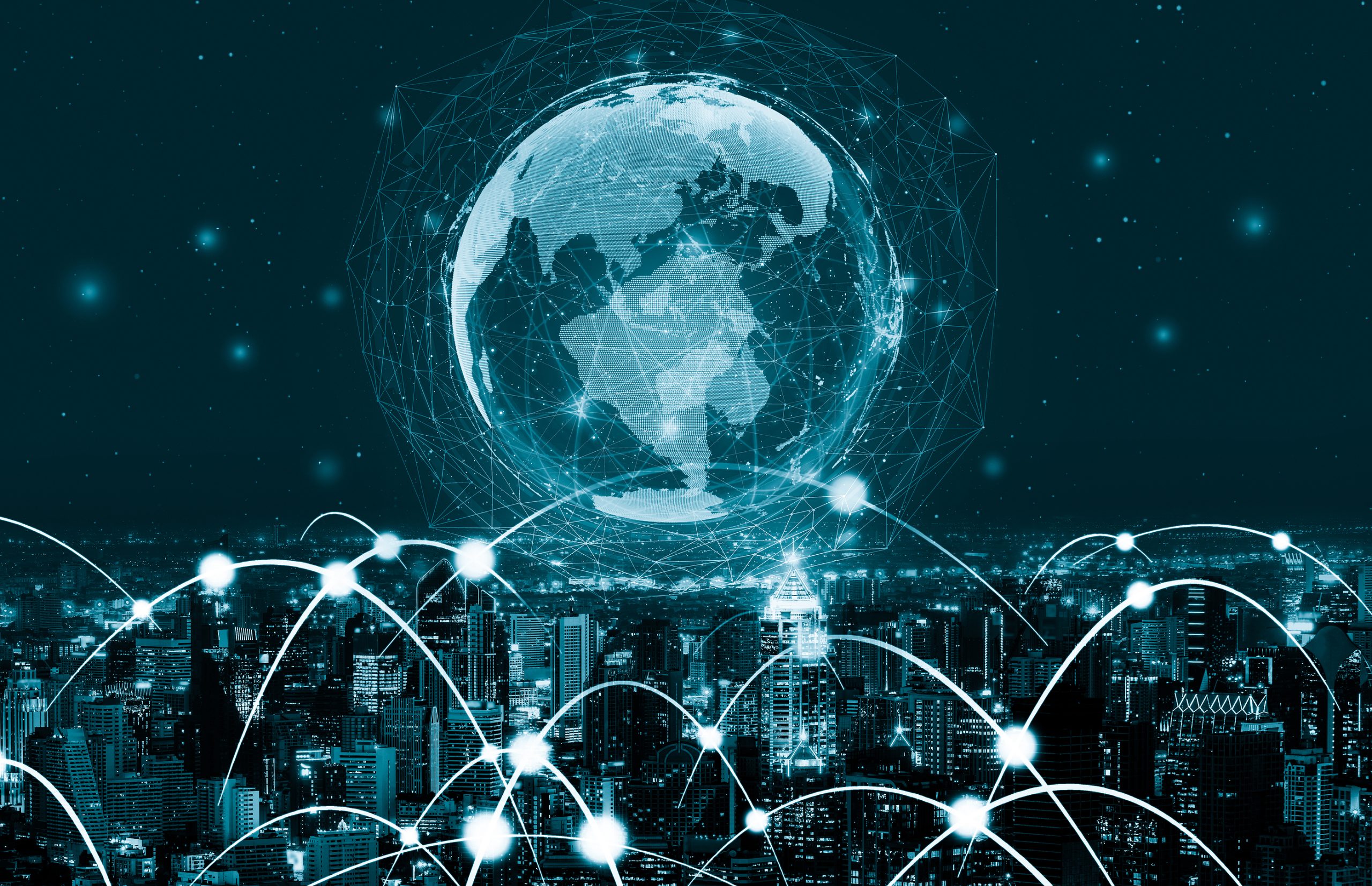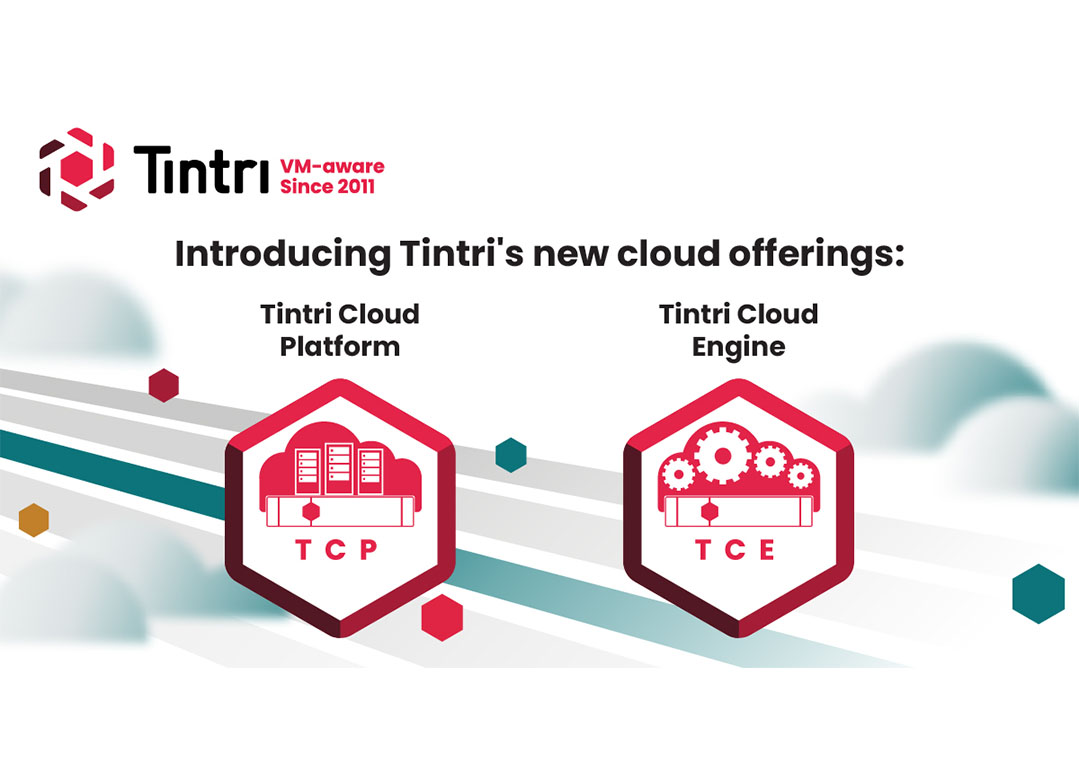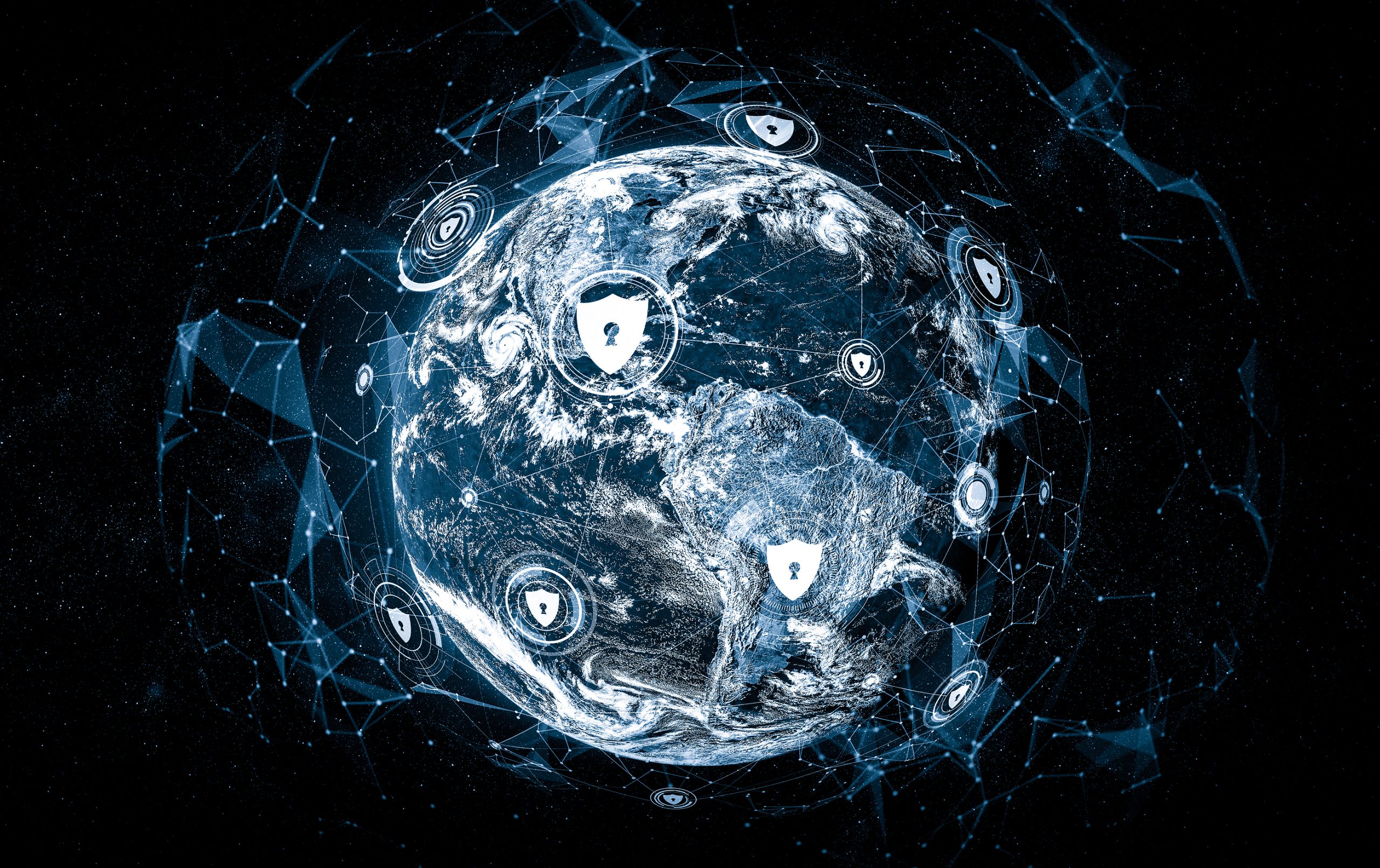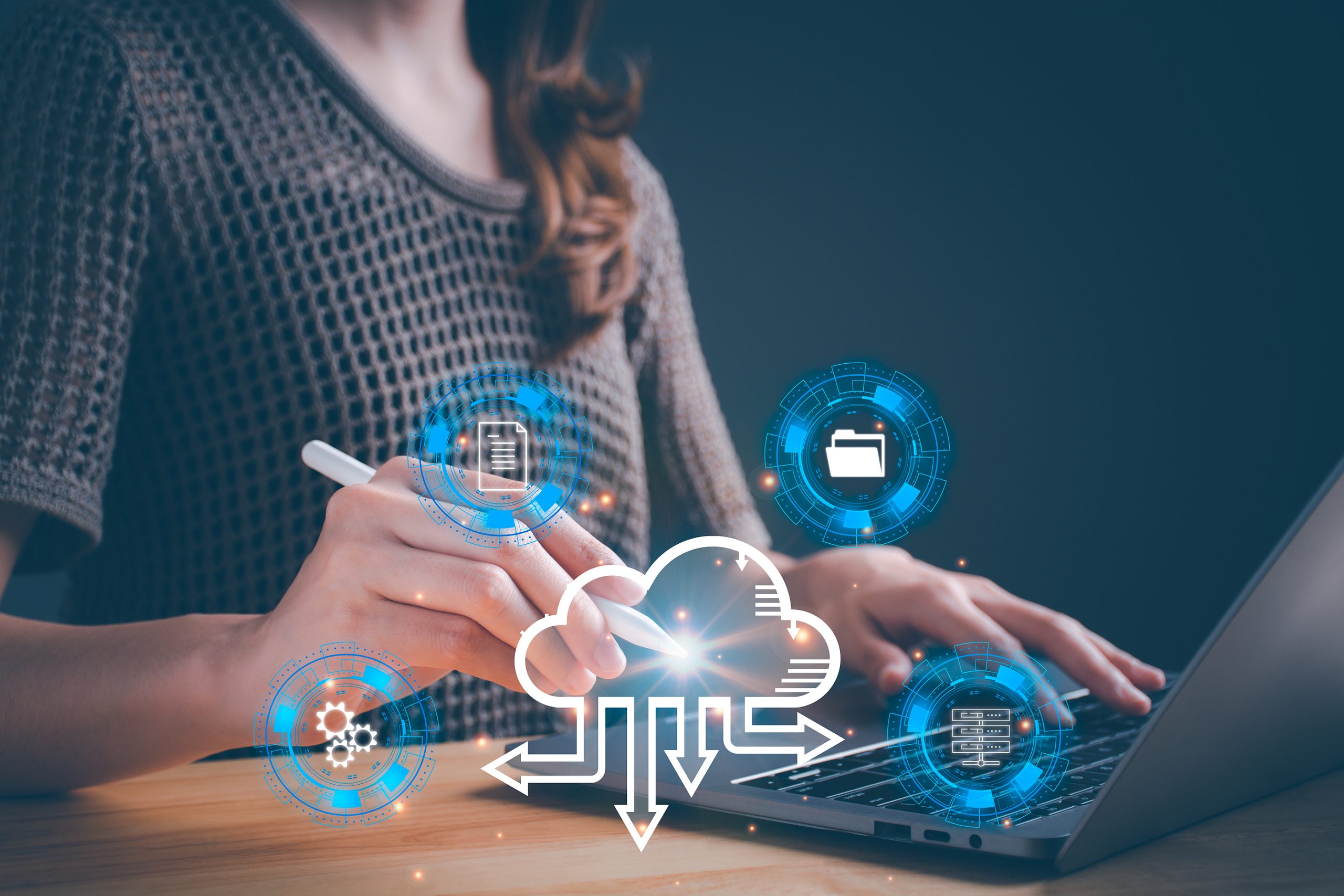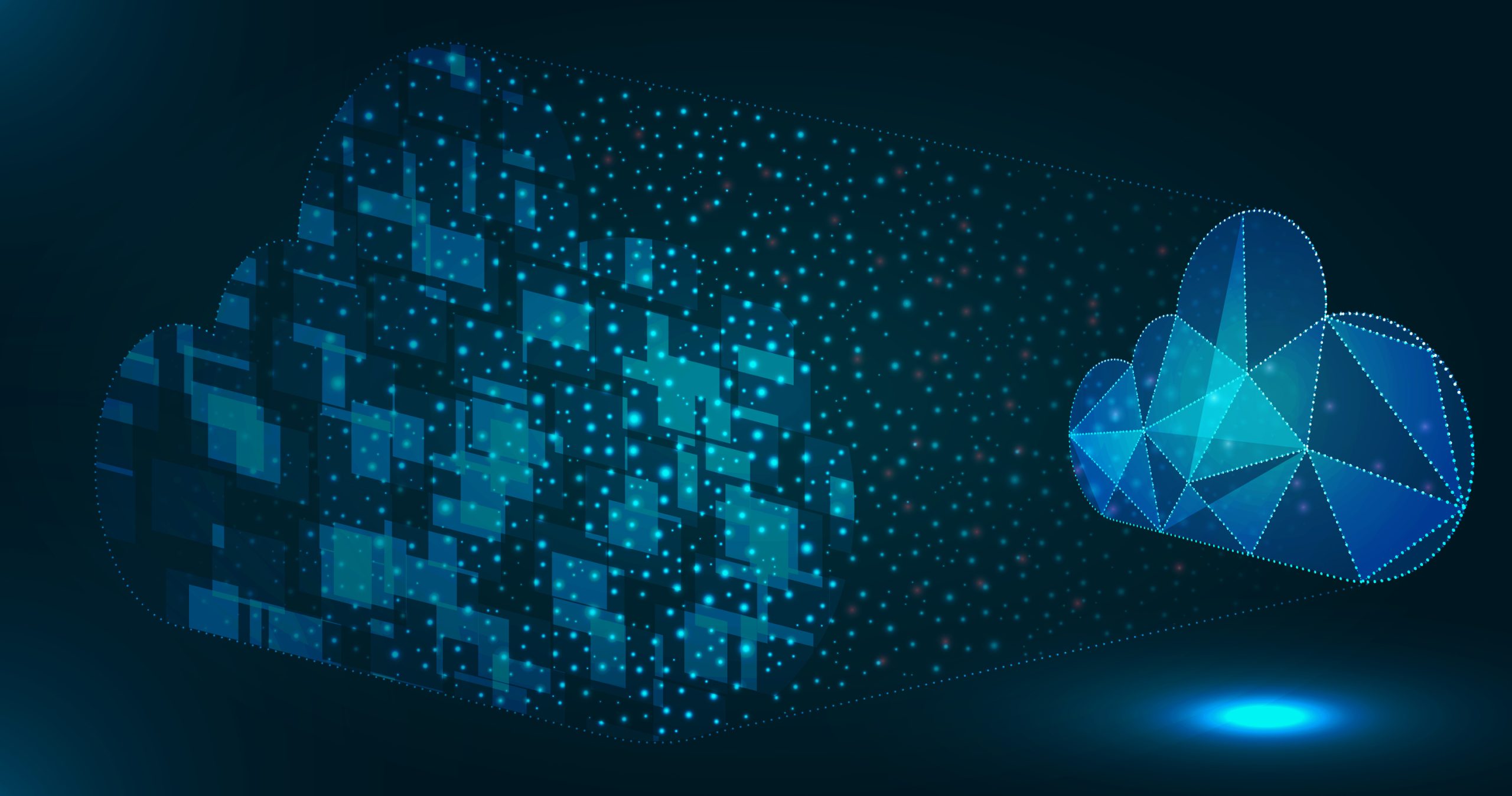Features
Data Centre Architecture Insights & Best Practices
Data Centre Operations: Optimising Infrastructure for Performance and Reliability
Data Centres
News
News in Cloud Computing & Data Storage
Gcore and Ampere to provide high-performance cloud solutions
Gcore has announced its collaboration with Ampere. The collaboration brings together Gcore's cloud infrastructure expertise with Ampere's innovative 128-core processors based on the ARM architecture and optimised for cloud workloads.
Gcore virtual machines (VMs) now support configurations based on the Ampere Altra processor family, a cloud-native processor that delivers predictable high performance, linear scalability, and power efficiency for data centre deployments, from hyperscale cloud to edge cloud. Ampere's processors offer high core counts, allowing for efficient parallel processing of workloads.
A performance comparison of Ampere, Intel, and AMD processors on a single node running typical workloads shows that Ampere is on average faster than Intel Xeon third Gen and AMD EPYC third Gen.
Gcore VMs are hosted on HPE ProLiant RL300 Gen11 servers, which are equipped with Ampere Altra processors. This is the server designed specifically for providers and digital-first enterprises that need to deploy cloud applications.
The scalability of the Ampere Altra product family enables cloud providers and data centres to handle a large number of concurrent tasks and efficiently scale their infrastructure as demand increases. It is also cloud-optimised and helps to maximise overall performance and cores-per-rack density.
Ampere processors are based on the ARM architecture, which offers several advantages for cloud-native environments, including power efficiency, performance per watt, and support for heterogeneous workloads.
Isha Jain - 9 October 2023
Data Centre Operations: Optimising Infrastructure for Performance and Reliability
News
News in Cloud Computing & Data Storage
Cloud Industry Forum appoints Kaizo's Steph Macleod to the board
The Cloud Industry Forum (CIF) has announced that Steph MacLeod, Director and co-owner of Kaizo, has been appointed to the board.
Steph will play a pivotal role in supporting the rest of the board in shaping the future of cloud computing and driving CIF's mission to provide thought leadership, best practices, and advocacy for organisations embracing cloud technologies.
With her strong track record in communicating innovation within the technology sector, Steph is set to focus on amplifying CIF's initiatives and the membership’s vast intellectual capital, to address the range of challenges and opportunities today’s market presents – from emerging technology and macro-economic forces through to skills and diversity.
Steph brings nearly 30 years of communications consultancy experience to the table having represented a range of leading technology brands from HP and Apple to Tata Consultancy Services and NetSuite. Kaizo’s current technology portfolio includes brands such as BlackLine Expereo, ExpressVPN, Freshworks, Sharp, SnapLogic and Stack Overflow. Her work includes the development of global thought leadership campaigns, content and communications strategies.
Commenting on her appointment, Steph says, "I am truly honoured to join the Cloud Industry Forum as Director. Cloud technologies have revolutionised the way businesses operate, and I am excited to play a role in CIF's efforts in promoting the benefits and opportunities inherent in further and advanced adoption. I look forward to collaborating with industry leaders to talk about the issues that are most critical to the industry both today and in the future.”
Kaizo has also become a member of CIF as Steph commences her role.
Isha Jain - 2 October 2023
Data Centre Operations: Optimising Infrastructure for Performance and Reliability
Enterprise Network Infrastructure: Design, Performance & Security
News
News in Cloud Computing & Data Storage
Spirent unveils industry's first fully cloud-native solution
Spirent Communications has announced availability of the industry’s first fully cloud-native solution to help communication service providers (CSPs) and cloud-native network function (CNF) vendors ensure resilient 5G services.
An automated test platform, Spirent CloudSure evaluates and validates CNF resiliency within 5G networks with comprehensive testing capabilities to help ensure reliable service delivery, while reducing operational costs, and optimising customer experience.
“Cloud-native environments represent a revolutionary new technical approach that breaks a handful of highly reliable, vertically integrated 5G functions into thousands of individual software components that run on a cloud that is optimised for performance and cost, but not reliability,” says Glenn Chagnot, Senior Director of Product Management for Cloud Solutions at Spirent.
“Cloud-native marginalises traditional testing and visibility approaches, demanding completely new processes and tooling to realise the potential benefits. CloudSure provides proactive, pre-deployment validation to test 5G services with real-world traffic operating on an imperfect cloud to ensure services are resilient and always available in operations.”
CloudSure has been engineered to help network operators deliver robust and resilient 5G services to end users in the complex, highly dynamic, cloud-native world. It enables:
Reliable service delivery: Confirms 5G cloud-native network functions operate reliably under the most challenging cloud conditions for uninterrupted service delivery and long-term revenue growth.
Reduced operational costs: Optimises resource utilisation and validates complex fault recovery mechanisms to avoid costly outages, 5G service interruptions and reduce operating expenses.
Enhanced customer experience: Ensures resilient 5G service design, configuration and performance to deliver high-quality user experiences to improve customer satisfaction and retention.
Competitive advantage: Enables reliable, high-performing 5G services that meet customer expectations consistently, for a competitive edge in 5G and to attract new customers.
Isha Jain - 26 September 2023
Data Centre Operations: Optimising Infrastructure for Performance and Reliability
Data Centres
News
News in Cloud Computing & Data Storage
Tintri announces two new cloud solutions
Tintri has announced two new offerings that will enable customers to leverage the advantages of a cloud infrastructure.
Tintri Cloud Platform (TCP) leverages the efficiency, transparency and flexibility that its customers rely on without the hardware investment.
Tintri Cloud Engine (TCE) is a container-driven VMstore platform that allows current customers to add a hybrid cloud deployment to their existing infrastructure.
Tintri Cloud Platform: Integration of VMstore environments
TCP enables customers to experience the benefits of its VMstore-powered managed cloud infrastructure. It is a full turnkey offering that provides scalability and flexibility, delivering host-in-cloud as well as process-in-cloud capabilities. It also offers Disaster Recovery-as-a-Service (DRaaS), ensuring continuity of critical workloads in the event of a disaster.
TCE virtual platform compliments VMstore T7000 Series in simple cloud deployment
Tintri Cloud Engine decouples with its AI-powered software from the VMstore T7000 hardware platform.
It provides customers with the flexibility to deploy its technologies outside of the private data centre. TCE is purpose-built for virtualised workloads, opening the door to new levels of infrastructure efficiency in hybrid cloud ecosystems.
Running in the cloud as a container, it provides enhanced data protection, enabling snapshots of on-prem workloads to be replicated to cloud-based storage, leveraging Tintri Native Async Replication. With TCE snapshot replication, customers leverage the cost-efficiencies of cloud storage while increasing disaster recovery capabilities and ransomware protection.
With the massive influx of data and mobile workforces over the past few years, there is a critical need to implement a more flexible and interconnected IT ecosystem to manage the size and complexity of applications. TCE is designed to address this shift in the IT market and will give users a complete view into their hybrid cloud needs.
Click here for more latest news.
Isha Jain - 22 September 2023
Data Centre Operations: Optimising Infrastructure for Performance and Reliability
News
News in Cloud Computing & Data Storage
Friction between finance and tech leaders disrupts cloud spend
Vertice has announced the results of its global survey, “The State of Cloud Cost Optimisation”, which reveals that organisations are being held back from controlling their cloud spending and gaining ROI, because of a lack of alignment between finance and tech leaders.
Amidst cloud costs rising by an average of 35% year on year, Vertice surveyed 600 senior finance and tech leaders in the US and UK, and found that, cutting cloud spending was the highest priority for finance leaders, with more than three quarters (78%) listing it among their top three cost-saving priorities and a third (33.5%) revealing it as their number one priority. Only 9% of technical leaders say reducing cloud costs is a top concern. Instead, four out of 10 say their priority is hiring skilled cloud employees.
The survey also reveals that, 55% of finance leaders blame a lack of transparency from tech leaders, with 44% saying they can’t get visibility of cloud costs. Adding to this misalignment, relationships with cloud hosting providers are highlighted as a major threat to cost efficiency, with 39% of finance leaders finding it difficult to negotiate costs because technical staff own relationships with cloud vendors.
Alarmingly, over half (55%) of tech leaders say tension is caused by non-technical staff lacking the knowledge or expertise to understand cloud infrastructure configurations. Moreover, 25% of tech bosses say that finance staff want to reduce cloud spending, but they don’t have the tech or engineering resources to focus on cloud optimisation.
Leaders of scale-ups were by far the most likely to report high levels of friction, reporting a higher average rating of tension (eight out of 10), than those working in startups (5.4/10) and midmarket-sized companies (6.6/10), and almost twice the intensity of friction than those working inside enterprise-sized organisations (4.3/10).
To help organisations tackle the challenge of spiralling cloud spending, Vertice has launched its Cloud Cost Optimization platform, which empowers businesses to cut cloud spend by as much as 25%. The company already helps customers save 20 - 30% on SaaS spend, and now, it has also designed the platform to solve the acute problems faced by finance and tech leaders trying to reduce cloud spend.
Vertice tracks cloud usage and spending in real-time in a unified dashboard for finance and tech, removing the barrier between teams and enabling finance leaders to accurately forecast and control spending. It uses automation to ease the burden on busy engineering teams and elevate every aspect of cloud cost optimisation by performing continuous tests to highlight where efficiencies and savings can be made with minimal engineering effort, as well as automatically managing cost-saving plans, known as Reserved Instance (RI) commitments.
The survey findings also show:
Different priorities between finance and tech:
Saving money on cloud was the highest priority among finance leaders, with more than three quarters (78%) of them listing it among their top three and a third (33.5%) revealing it as their number one cost-saving priority.
Share of finance leaders listing cost-saving initiatives in their top three priorities:
Cloud costs: 78%
Employee headcount/salaries: 75%
Software as a Service (SaaS) fees: 71%
Office space: 56%
Using AI to automate tasks: 23%
Only 9% of technical leaders say reducing cloud spending is a top priority. Tech decision-makers are most concerned with cloud recruitment, with four in 10 (40%) saying their key priority is hiring skilled cloud employees.
The misalignment between finance and tech:
There are 55% of finance and tech leaders that admit there is a transparency/knowledge gap that could threaten the potential of cloud investments and even hold back innovation.
An almost equal proportion of financial leaders (27%) and tech leaders (32%) say balancing innovation and cost is a key cause of friction between them.
FinOps strategy:
Nine in 10 businesses either already have, or desire to have, a FinOps strategy in place, but less than a third have done so successfully.
Struggling to find time for cloud cost optimisation:
Around 25% of tech leaders say that finance staff want to reduce cloud spending but they don’t have the tech/engineering resources to prioritise this.
Click here for more latest news.
Isha Jain - 22 September 2023
Data Centre Operations: Optimising Infrastructure for Performance and Reliability
News
News in Cloud Computing & Data Storage
Macquarie and VITG sign sovereign cloud deal
Macquarie Cloud Services, part of Macquarie Technology Group, has announced that it has expanded an agreement with Virtual IT Group (VITG) to provide secure private cloud services for its healthcare clients.
Headquartered in Illawarra, New South Wales, VITG provides managed network, infrastructure, applications, and security services to a range of sectors across Australia. It is a leading managed service provider (MSP) for the healthcare industry, which has some of the most stringent data security requirements of any sector.
To ensure it could enhance its leadership in the industry and satisfy the Australian Digital Health Agency’s recommendation for healthcare providers to keep data in Australia, VITG deployed Macquarie Cloud Services’ Launch private cloud. The company is the only in Australia to have both its cloud and data centre services certified at the ‘Strategic’ level under the government’s Hosting Certification Framework.
“Healthcare providers are increasingly sensitive to cyber security concerns, particularly given the major breaches we’ve seen in the past year and the fact that it remains the most targeted industry,” says Mark Farrell, Head of Security and Compliance at VITG.
“Clients constantly ask us about where their data is kept, how it’s secured, and where they might be exposed. Macquarie Cloud Services’ baked-in security, sovereignty, and expertise – particularly among its more-than 200NV1, government data security cleared personnel – make those questions very easy to answer.”
The deployment has seen Macquarie Cloud Services develop a customised private cloud for VITG in its Launch platform, built on Dell Technologies hardware, which includes security updates and patching, 24/7/365 support, monitoring, provision of insights, and alerts. It also migrated a huge volume of data from VITG’s self-managed data centre to Macquarie Data Centres’ sovereign facilities, with no disruption to workloads or customers.
VITG selected Macquarie Cloud Services primarily for its customer experience expertise, data sovereignty capabilities, and its ability to create customisable cloud environments. Mark says, the system is ideal for larger providers such as private hospitals, but that it can also provide affordable and scalable cloud to smaller GPs, physiotherapists, and more.
“Major private or public cloud deployments are often cost prohibitive and out of reach for smaller healthcare providers. But they’re bound by the same data protection requirements, so they need secure cloud. VITG and Macquarie Cloud Services make those services commercially viable, scalable, and secure, and we’ve had multiple requests to stand up more capacity which the team can instantly provide.”
Isha Jain - 21 September 2023
Data Centre Infrastructure News & Trends
Data Centre Operations: Optimising Infrastructure for Performance and Reliability
Infrastructure Management for Modern Data Centres
News
News in Cloud Computing & Data Storage
Salesforce standardises global hybrid cloud infrastructure
Red Hat has announced that Salesforce is standardising its global hybrid cloud infrastructure on Red Hat Enterprise Linux.
Helping the company to drive business transformation at scale to meet customer demand, Red Hat Enterprise Linux provides a more flexible and consistent foundation for security enhanced hybrid cloud deployments. The platform enables Salesforce to free up valuable developer resources, while at the same time consolidating IT systems, all helping to generate better business outcomes for customers.
Salesforce is a customer-centric, innovation-driven provider of cloud-based customer relationship management (CRM) systems, using a SaaS model to support a robust customer base. Over the years, Salesforce has continued to grow and evolve its offerings to incorporate breakthrough technologies, such as artificial intelligence (AI), automated self-service tools and real-time data insights to support customer business needs. In doing so, Salesforce relies on a massive IT footprint that spans hundreds of thousands of systems running in traditional data centre environments and in hyperforce, its platform architecture designed for the public cloud.
With the migration, Salesforce intends to gain even more efficiency in its IT operations, enhancing developer productivity and fuelling greater innovation across the customer experience. Red Hat Enterprise Linux offers the necessary stability for modern IT workloads and enterprise-grade hybrid cloud deployments, enabling organisations to run applications anywhere while providing ease of management across on-premises and cloud environments.
By migrating its global infrastructure from CentOS Linux to Red Hat Enterprise Linux, Salesforce seeks to realise key benefits such as:
Optimised performance and efficiency across various hardware and software architectures, including ARM, which enables Salesforce engineering teams to more easily adopt breakthrough technologies without incurring new infrastructure demands.
Meeting customers where they are with a hardened platform that can drive more consistent innovation across the hybrid cloud, from the data centre to public clouds to the edge, with the capacity to support unique customer use cases regardless of location or scale.
Improved system security measures with Red Hat Enterprise Linux’s layered approach to IT environment security, including support for many of the latest cryptographic and secure computing innovations.
Enhanced customer support experiences through Red Hat’s support team, enabling Salesforce engineering to focus on delivering customer value without being bogged down in the minutiae of managing an operating system at cloud-scale.
Isha Jain - 21 September 2023
Data Centre Operations: Optimising Infrastructure for Performance and Reliability
Enterprise Network Infrastructure: Design, Performance & Security
News
News in Cloud Computing & Data Storage
Abdul Latif Jameel teams up with AWS to power digital transformation
Amazon Web Services has announced that Abdul Latif Jameel has selected AWS as its preferred cloud provider to power its digital transformation and drive innovation across its core sectors — mobility, energy, health, and financial services. In addition to its agreement with AWS, Fotowatio Renewable Ventures (FRV) will provide clean energy capacity to power Amazon’s operations.
Abdul Latif Jameel is building a companywide analytics, machine learning, and generative AI program, powered by AWS, to rapidly develop and introduce new applications across a wide range of industries. The company will use AWS services such as Amazon Simple Storage Service (Amazon S3) and AWS Lake Formation to ingest, catalogue and secure financial data, making it available to all of its business units to help drive customer enhancements and process improvements.
It will also use Amazon Bedrock, a service that makes foundational models available via an API, to develop generative AI applications that will help car manufacturers offer digital showroom experiences for customers and enhance in-car experiences, while reducing development costs.
As part of its focus on environmental responsibility, Abdul Latif Jameel is making progress on its decarbonisation goals by migrating its on-premises IT workloads to AWS, further reducing its carbon footprint.
In a second agreement with Amazon, FRV, part of Abdul Latif Jameel Energy, will provide renewable energy from five solar projects in Spain to power Amazon’s operations. With one plant already operational and the remaining four projects due for completion in 2024, the solar farms are expected to generate more than 1.5TWh of clean energy each year, which is enough to power the equivalent of more than 400,000 European homes.
Isha Jain - 21 September 2023
Data Centre Operations: Optimising Infrastructure for Performance and Reliability
News in Cloud Computing & Data Storage
Busting cloud myths and embracing the advantages
By Josh Boer, Vice President of Sales at VeUP
The modern workforce is swiftly embracing digitisation, driven in large part by the pandemic's influence on remote work adoption and the demand for streamlined supply chains. As we move forward, worldwide public cloud end-user spending, forecasted by Gartner, is set to soar to nearly $600bn in 2023, surpassing the $491bn spent in 2022.
From global corporations to small and medium-sized enterprises (SMEs), the adoption of cloud computing is becoming a cornerstone for operational modernisation and securing a competitive edge. However, in the midst of this transformative journey, some concerns about cloud security have risen.
In fact, over half of IT and security leaders admit to lacking confidence in their organisations' ability to verify cloud environment security, while others express fears of exposing critical data to cyber threats.
Is the cloud secure for SMEs?
Clearing the fog of uncertainty around cloud security is pivotal to instil confidence in businesses. SMEs often worry that storing data in the cloud sacrifices their control over its management and security. Contrary to this notion, cloud providers offer 24/7 data access and provide scalable tools for protection. Security features, including comprehensive monitoring systems and data safeguarding, are fundamental aspects of cloud security.
The truth is, businesses retain control over their data even after migration to the cloud. While the choice of a cloud provider doesn't dictate all aspects of data storage and security, customers have full access to their information and the autonomy to make decisions regarding its protection. Depending on specific features and services employed, encryption methods and data classification can be tailored to individual needs.
Cloud maturity: trusting the evolution
The belief that cloud computing is too new to trust is another misconception. While AWS debuted in 2004, nearly two decades of evolution have transformed it into a global cloud leader, boasting an array of over 200 comprehensive services accessible through data centres worldwide. Serving clients from startups to government entities, AWS has nurtured a user base that relies on its platform to enhance agility, drive down costs, and expedite innovation. In this context, SMEs can tap into a suite of tailored services catering to their unique organisational requirements.
Estimates from Synergy Research Group revealed that Amazon’s market share in the worldwide cloud infrastructure market stood at 32% in the second quarter of 2023, down from 34% a year ago, but still above its rivals Microsoft and Google.
While short-term economic challenges and belt-tightening measures may impact spending on cloud services, the resilience and customer-centric approach of AWS provides assurance. Its proven track record of commitment to building strong customer relationships also highlights its ability to weather economic downturns and thrive in the long run.
Harnessing cloud benefits for SMEs
Amplifying business agility: Cloud technology empowers SMEs to swiftly navigate market shifts through scalable resources. Leveraging cloud solutions, SMEs can pivot operations, seize new opportunities, and employ cloud-enabled disaster recovery and backup strategies to weather disruptions with minimal downtime.
Trimming legacy IT expenses: Contrary to the misconception that cloud migration is costly and unnecessary, cloud computing dramatically reduces IT infrastructure costs. By eliminating the need for physical hardware and infrastructure management, cloud computing shifts costs to the cloud service provider, enabling businesses to pay only for the resources they use.
Empowering remote accessibility: Cloud solutions facilitate remote work by providing seamless access to applications and data from anywhere with an internet connection. This not only fosters a culture of remote collaboration, but also reduces the necessity for physical office spaces, utilities, and commuting expenses, yielding additional cost savings. As the world emerges from the pandemic and businesses ponder the return to physical workplaces, cloud computing, which proved instrumental in enabling remote work during the crisis, continues to be pivotal. Facilitating hybrid work models, cloud computing ensures consistent access to collaborative tools, documents, and data, striking a balance between productivity, collaboration, and employee preferences.
Fostering an evergreen technology landscape: Cloud services enable SMEs to maintain an evergreen technology stack by harnessing continuous updates and innovations without the burdens of costly and time-consuming hardware upgrades. This transformative approach keeps technology consistently cutting-edge, fostering resilient and forward-looking IT infrastructures free from the constraints of physical hardware's lifecycle.
Closing thoughts
As discussions of the return to physical offices grow louder, and the impending news that cloud costs are expected to increase by 10% this year, it's critical to address these concerns and shed light on the truths of cloud security.
The shift to the cloud remains more than a trend - it's a seismic transformation affording SMEs capabilities to enhance their overall competitiveness and efficiency, facilitating unified communications across the board and cutting down expenses over the likes of IT infrastructure maintenance costs.
Click here for more latest news.
Isha Jain - 19 September 2023
Artificial Intelligence in Data Centre Operations
Data Centre Operations: Optimising Infrastructure for Performance and Reliability
News
News in Cloud Computing & Data Storage
Sustainable Infrastructure: Building Resilient, Low-Carbon Projects
The critical role of cloud strategy in driving business innovation
HCLTech has launched a new report providing compelling insights into how organisations can overcome key obstacles like security concerns, talent gaps and company culture to maximise the business impact of their cloud investments. Titled 'Cloud Evolution: Make Innovation a Habit', the report is based on a survey of 500 senior business and technology leaders across industries.
The report revealed that while 73% of executives believe their companies are only beginning to leverage the potential of cloud, over 90% recognise cloud’s vital role in enabling rapid response to critical business events, strategic pivots and adopting leading-edge technologies like AI.
Cloud continues to enable businesses to pivot when faced with new and unforeseen challenges. As high as 87% of the respondents in the survey said that they would not have been able to make significant pivots last year without cloud. Businesses are relying on cloud to meet sustainability goals (91%), to work through pandemic-related staffing and supply chain issues (87%) and mitigate the impact of rising inflation (77%), showed the survey.
“Cloud is rapidly becoming the optimal business platform for innovation at scale,” says Kalyan Kumar, Global Chief Technology Officer and Head – Ecosystems, HCLTech. “However, many companies have yet to fully tap into its potential. This report offers a blueprint for developing the right cloud strategy to drive competitive advantage.”
The respondents agreed that innovative technologies like Gen AI and cloud go hand-in-hand. Of the respondents, 58% noted that businesses have increased or are planning to increase investments in Gen AI and 85% believe it is only possible with the right cloud strategy. Both IT leaders (86%) and business leaders (81%) agree that they closely collaborate with one another to discuss cloud strategy to unlock their potential to innovate.
However, 73% of the survey participants said that their business is only just beginning to unlock the potential of cloud. Nearly a third of the senior executives (32%) said that a lack of alignment and collaboration between business and technology departments is an obstacle to achieving their business goals.
“Forward-thinking leaders recognise that cloud is no longer just an infrastructure play but rather a transformational business platform,” says Siki Giunta, Executive Vice President, CloudSMART and Industry Consulting, HCLTech. “By following the recommendations in this report, organisations can truly unleash cloud’s potential to accelerate growth and resilience.”
To make innovation through cloud a norm, the report advises companies to leverage cloud’s agility, shape their organisation’s culture around cloud, break down departmental barriers, increase cloud literacy and tightly align cloud strategy with AI and other emerging technology adoption plans.
HCLTech’s CloudSMART strategy ensures meaningful business outcomes from clients’ cloud investments. Industry expertise across all segments forms the HCLTech cloud offering and highly automated services increase agile implementation of modern cloud best practices.
Readers can view the full research report here: https://www.hcltech.com/cloud-research.
Isha Jain - 15 September 2023

Head office & Accounts:
Suite 14, 6-8 Revenge Road, Lordswood
Kent ME5 8UD
T: +44 (0)1634 673163
F: +44 (0)1634 673173
